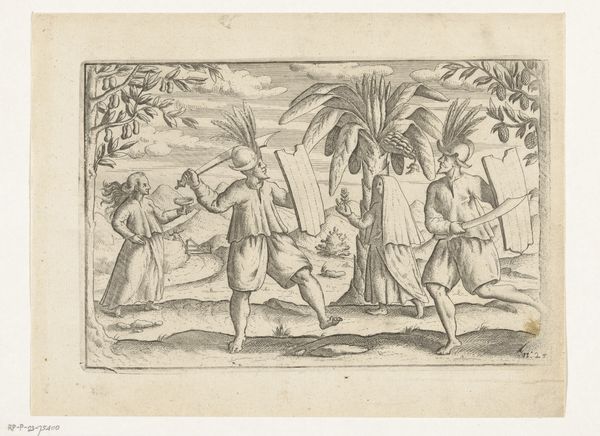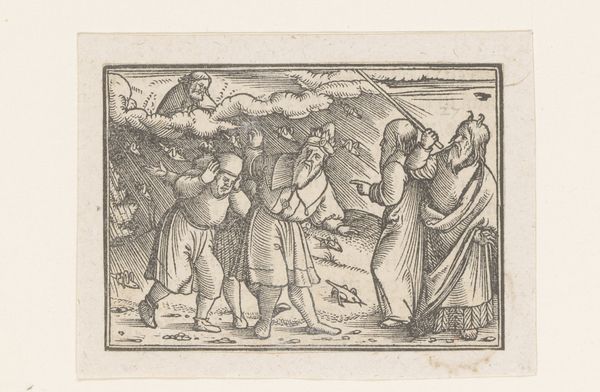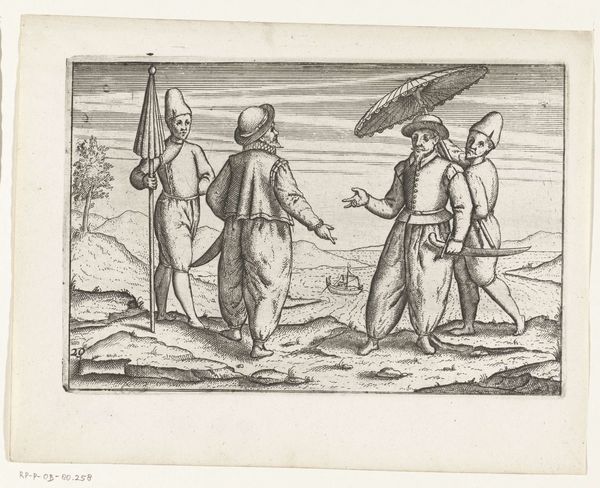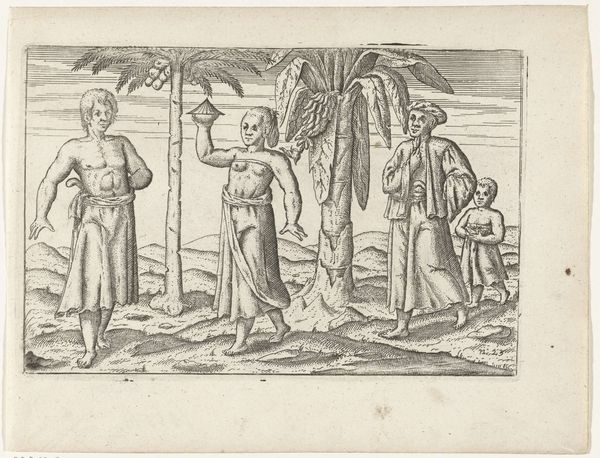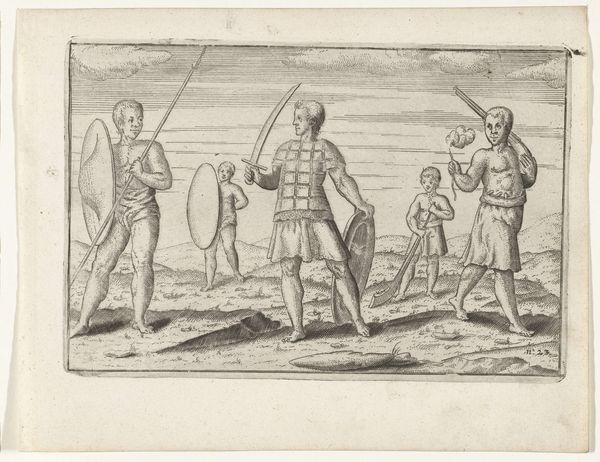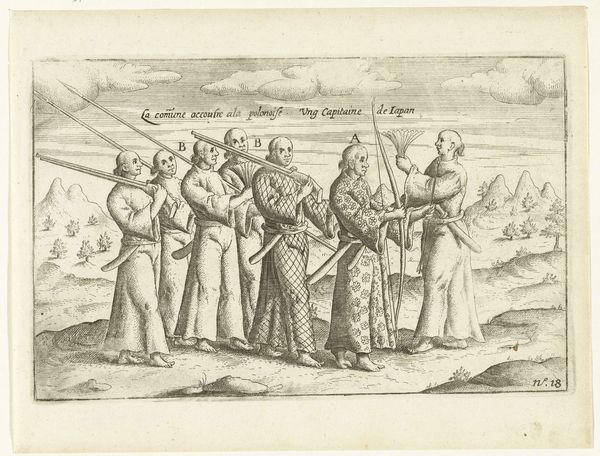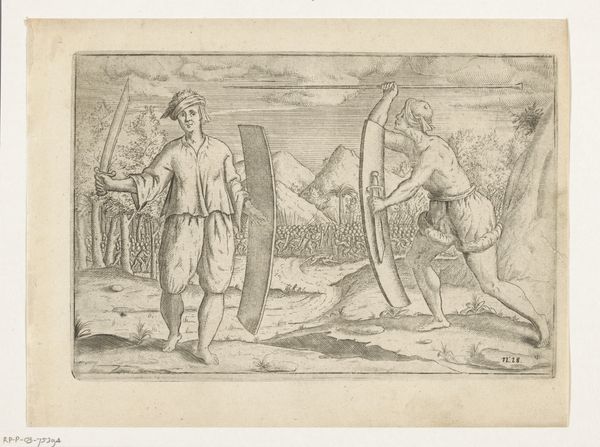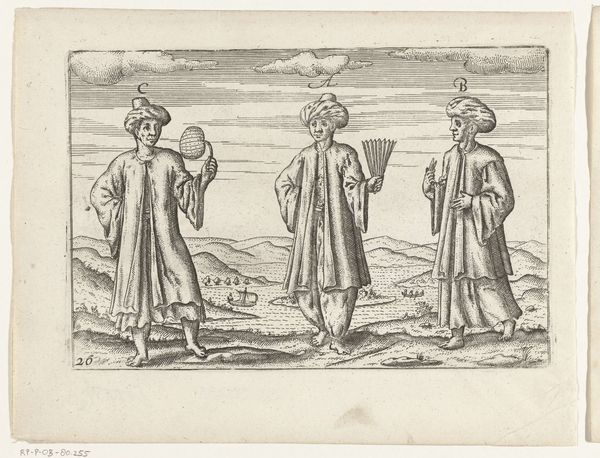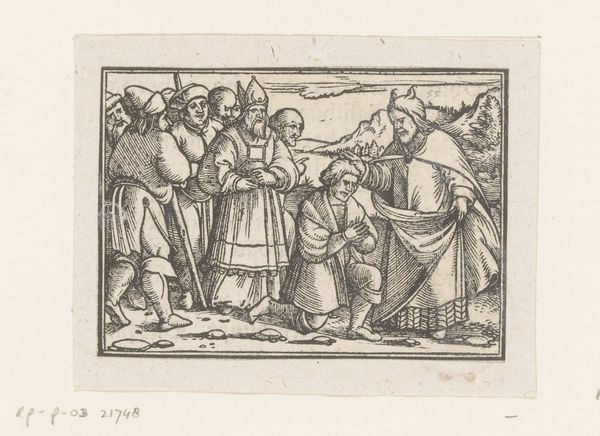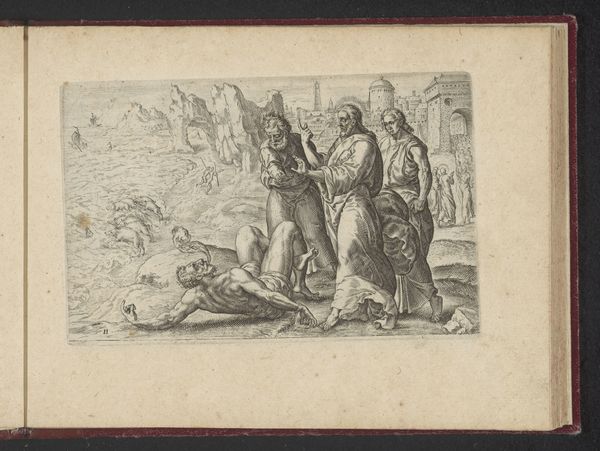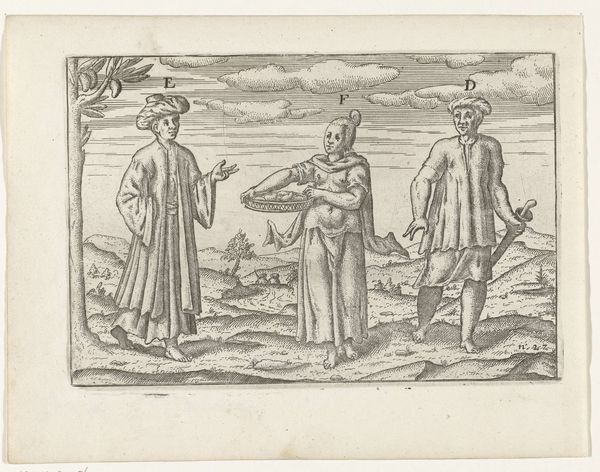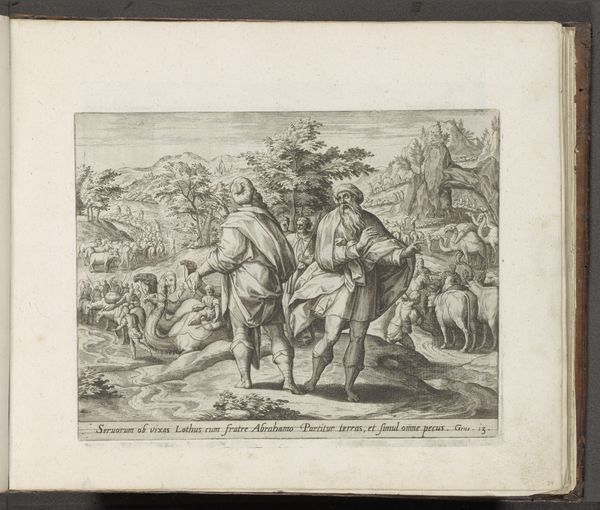
print, engraving
#
portrait
#
narrative-art
#
dutch-golden-age
# print
#
old engraving style
#
landscape
#
figuration
#
line
#
islamic-art
#
genre-painting
#
history-painting
#
engraving
Dimensions: height 145 mm, width 215 mm
Copyright: Rijks Museum: Open Domain
Editor: This is "Inwoners van de Banda-eilanden, 1599", a print from the early 1600s by an anonymous artist, held at the Rijksmuseum. It depicts a group of figures, seemingly engaged in some kind of encounter. It feels very documentary, almost like an ethnographic record. What draws your eye to this piece? Curator: The striking thing is how this print performs as a form of early commodity exchange itself. Look at the detail in the clothing, the weaponry. These weren't casual observations; the engraving process demanded a skilled hand, access to materials, and a clear intention to circulate these images widely. Consider this: what was the consumption context for this print? Editor: I hadn't thought of it that way, almost like visual propaganda. Who was the intended audience and what did the printmaker want them to think about this place? Curator: Precisely. The level of detail in representing both the Banda Islanders and the Dutch attire speaks volumes. Think about the labor involved in creating this image and how that labor connects to the broader colonial project. The consumption of spices from the Banda Islands fueled the Dutch economy, and images like this helped justify the often-brutal methods used to obtain those resources. The image becomes a tool, just like the spices. What does that tell you about the nature of art in this period? Editor: So, the act of creating and circulating this print was inherently tied to the economic and political power dynamics of the time. I hadn’t considered the print itself as part of that machine of colonialism before. It’s really shifted how I view not only this image, but the role of art of the time, as propaganda through production. Curator: Indeed. By examining the means of production and circulation, we unveil the intertwined histories of art, labor, and colonial power. There's much to discover about how visual culture actively participated in shaping and perpetuating these structures.
Comments
No comments
Be the first to comment and join the conversation on the ultimate creative platform.
